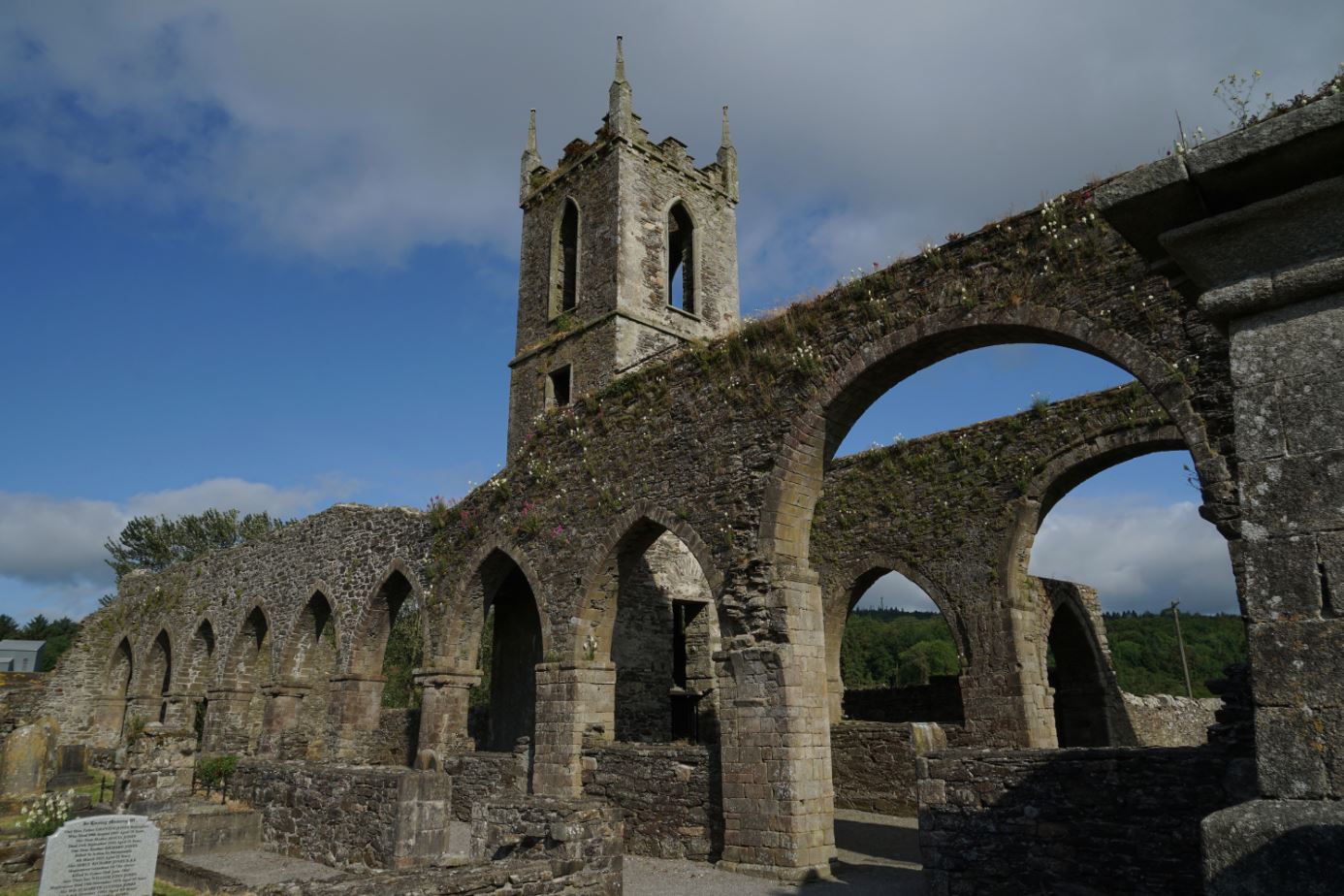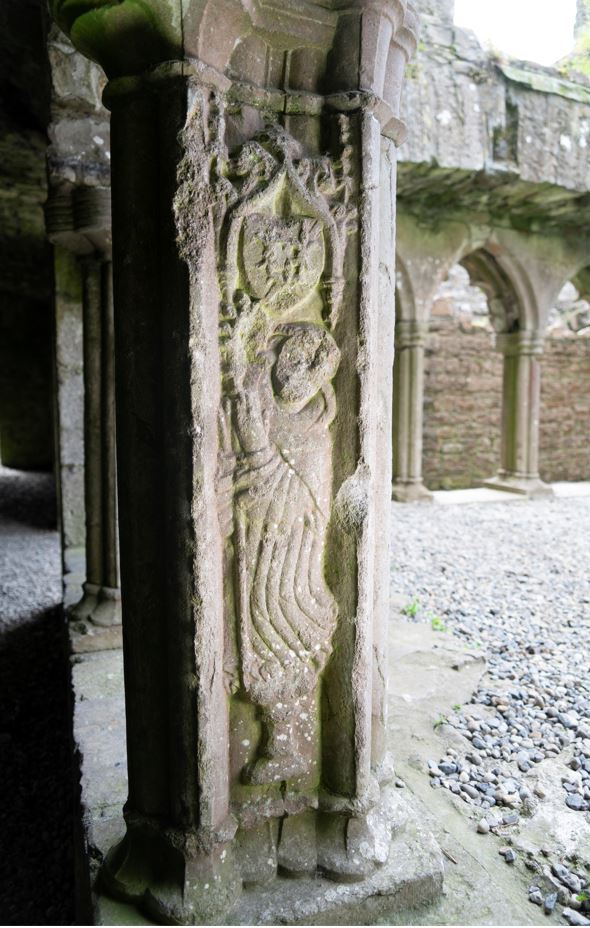1228 - the Mellifont conspiracy
When Malachy
founded Mellifont Abbey
in 1142, the first Cistercian monks that arrived here came from France, but also included some Irish novices who had trained at Clairvaux. It is said that the French monks quickly fell out with their Irish brethren, and soon returned to France. Whether or not this is true, Mellifont quickly went from strength to strength, and within only four years five daughter houses had been established, including Bective Abbey in Meath, Baltinglass Abbey in Wicklow, and Monasternenagh in Limerick. Over the coming years the daughter houses would remain closely linked with their mother-house in Louth. It is said that by 1170, Mellifont was home to 100 monks and 300 lay brothers. In 1190 Malachy was canonised (the first papal canonisation of an Irish saint) and four years later the Pope granted permission for the translation of relics of St Malachy from Clairvaux to Mellifont. Unfortunately, none of these relics survive today.
By 1200, several new Cistercian Abbeys had been founded by the Anglo-Normans in their newly conquered lands. These were primarily established as daughter houses of well-established abbeys in England and Wales, who provided abbots and monks for their new Irish foundations. This created the conditions for a cultural collision between the Cistercian Abbeys in Ireland that in some ways mirrored the clash of cultures that was taking place on the political stage.
In the years that followed, the Irish abbots of the Cistercians abbeys, including Mellifont, were reluctant to travel to the order’s annual chapter at Citeaux in France, which meant that the Irish houses were increasingly isolating themselves from the meetings where decisions were being made. Successive attempts by Citeaux to reach out to the Irish abbeys were ignored, and decrees issued by the order’s central authorities were resisted by Mellifont and her daughter houses, as well as a broader alliance of Cistercian abbeys across Ireland. By 1216 it was clear that a general breakdown in discipline had occurred in the Irish abbeys and the General Chapter decided to act. As the abbey most closely associated with the Irish houses, it would fall under the responsibility of the abbot of Clairvaux in France to take the necessary steps to reform Mellifont and its affiliated abbeys.
In 1217 a visitation of French abbots arrived in Ireland to begin the process of reform. The visitors found that the abbot had the gates of Mellifont shut when they arrived. While they were at Jerpoint Abbey, Co. Kilkenny, the abbot there incited a riot. There was little doubt that the Irish monasteries harboured deep resentment of foreign interference. However, before they left, the French delegation began the process of reassigning several of the abbeys that had previously been affiliated with Mellifont. For example, Baltinglass Abbey was made subject to Fountains Abbey in Yorkshire, while Monasteranenagh was made subject to Margam Abbey in Monmouthshire. When a new abbot, of Anglo-Norman stock, was imposed on the abbey of Baltinglass, the community drove him out and knocked him off his horse. This was a sign of things to come.
Subsequently, a more decisive visitation of the Irish house was made in order to deal with the so-called conspiracy of Mellifont against the order’s authorities. During the General Chapter at Citeaux in 1227, the man who was delegated to visit Ireland was Stephen of Lexington, abbot of Stanley in Wiltshire, who had studied in Paris and Oxford. Stanley Abbey was the mother-house of Duiske Abbey in Graiguenamanagh in Co. Kilkenny founded by William Marshal
in 1204. Therefore, Duiske Abbey was not part of the Mellifont affiliation. Neither was Tintern Abbey
in Wexford, founded by William and Isabel Marshall in 1200 as a daughter house of Tintern in Wales. Both Duiske and Tintern, as well as other similar Anglo-Norman foundations, were strongly supportive of Citeaux’s moves to bring the Mellifont affiliation of abbeys into line. Not surprisingly, therefore, Lexington commenced his Irish visitation in March 1228 in Wexford.
At Mellifont in late July Lexington found that some 68 out of 110 monks there had fled to west Ulster. Those that had remained were no less hostile, however, he ensured the election of a new abbot, Jocelyn, the Anglo-Norman prior of Beaubec in France. At Baltinglass the Irish abbot Malachy, presumably named after the order’s founder in Ireland, had gone to Citeaux to complain to the head of the Cistercian order about the changes that were being imposed. In his absence, Stephen of Lexington had little difficulty in taking control of the abbey. However, at Monasternenagh in Limerick he found the abbey prepared for a military siege. A force armed with stones, stakes, spades and spears was awaiting his arrival. Food, including cows and hay, had been brought within the abbey. Clearly the occupants were ready to hold out for a siege and were supported by Donnchad Cairprech, king of Thomond and son of Domnall Mór Ua Briain. The threat of violence was met with violence, and Stephen of Lexington enlisted the support of the bishop of Limerick who took the abbey by force. The bishop was none other than Hubert de Burgh, son of William de Burgh
who led Anglo-Norman advance into north Munster after the death of Donnchad Cairprech’s father in 1194.
By the time he left Ireland, Stephen of Lexington had compiled a series of new rules, aimed at bringing uniformity and discipline to the Cistercian monasteries here. Lexington in particular deplored the use of the Irish language by the Irish monks and ordered that before a new monk could be admitted, he had to learn French or Latin. Regulations were drawn up to safeguard monastic property from being sold. Monks were ordered to restrict their contacts with the outside world and return to a full observance of the Cistercian way of life. He also broke up the Mellifont affiliation, started the previous year, by placing her daughter houses under various English and French monasteries, in order to ensure stricter control. As the revolt was attributed to the abbeys dominated by Irish clergy, Irish monks were barred from serving as abbots and senior positions for three years, though several exceptions were made. In November 1228 Stephen of Lexington brought his visit to Ireland to an official conclusion by holding an assembly of abbots from across Ireland at Tintern Abbey, Co. Wexford. Subsequently, in 1243, Stephen was promoted when he was elected abbot of Clairvaux.



